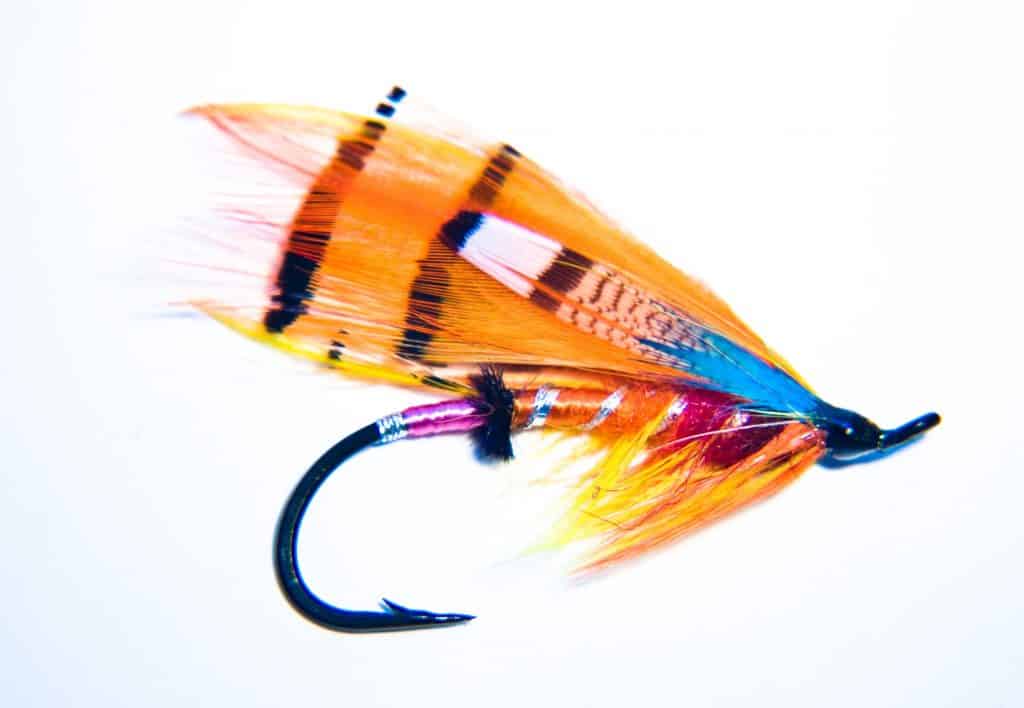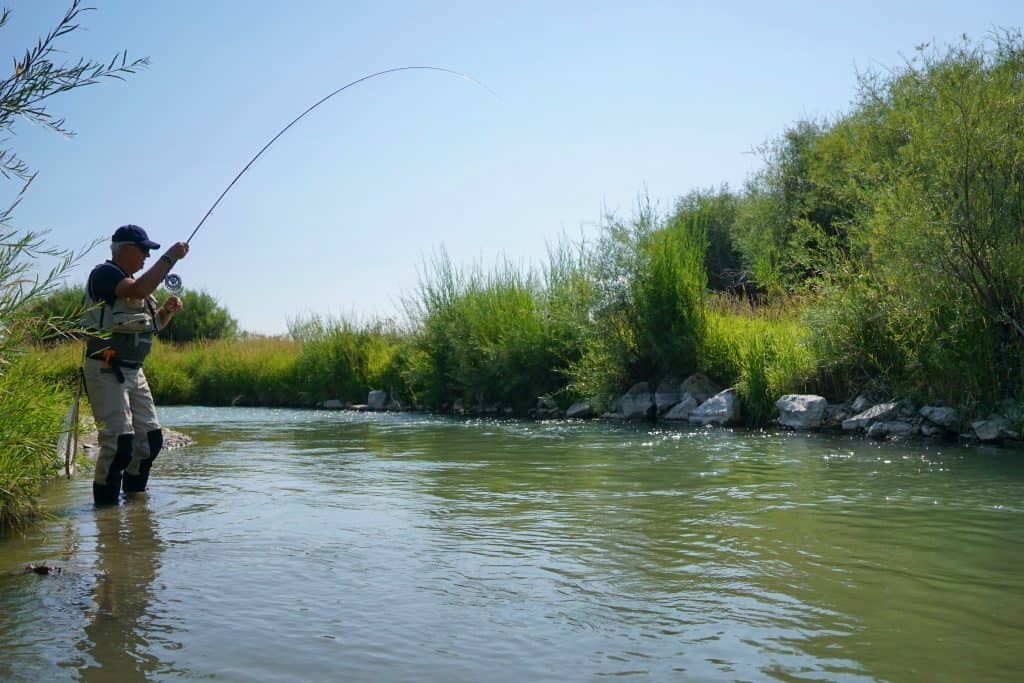
After recently having a conversation with some friends about fly fishing, I heard someone talk about a “Dry Fly”. Not knowing what in the world that was, I did some research to understand the term better, and here it is.
So, what is a dry fly in fly fishing? Dry flies represent insects that fish usually feed on that generally land on top of the water. Dry flies are, to fish, insects that are in the process of hatching, those who land on the water surface to rest, and even the bugs that accidentally got caught in the water.
As simple as this may sound, there is actually a lot to learn about dry flies and how they are used properly. They are even known to many fly fishers to be more fun and exciting to fish with while at the same time being more challenging. Continue reading to further understand the purpose behind fly fishing with dry flies.
Best Dry Flies to Fish With
Before getting into the nitty-gritty things about fishing with dry flies like why you should do it and what some techniques are, I thought it was appropriate to list some of the best dry flies to use that are on the market. Below is a list of my top 3 dry fly top choices:
- Parachute Adams
- Elk Hair Caddis
- Bunny Leech
The Parachute Adams
The Parachute Adams is commonly considered to be the best and most essential fly to use. It comes in many different sizes and variations. This dry fly is known to be able to hook trout on river and stream surface across the whole nation at virtually any season or time of the year.
This is due to the fact that this fly has an appearance that resembles a wide range of different insects as opposed to looking like one specific one. This makes it extremely versatile and effective.
The Elk Hair Caddis
The Elk Hair Caddis is a dry fly that is a great all-around general purpose bait. It is often used as a back-up to the Parachute Adams but is still very reliable and efficient. This dry fly has a strong specialty and that is for catching trout.
Experienced fly fishers who go trout fishing often say that they even prefer this fly over the Adams when it comes to trout. As mentioned before this is one of the most commonly used dry flies due to the fact that you can use it anytime and anywhere for any fish.
The Bunny Leech
The Bunny Leech is a dry fly that offers more movement and visible flare in the water. It is often compared to other wet flies and used very commonly. Many people argue that there are no flies that are more visible than those made with rabbit hair.
If many of us are thinking that, you can bet that even more fish are thinking about it as well and that is going to result in many catches.
Why Fly Fish With Dry Flies?
One of the biggest reasons to fly fish with dry flies is because it is an absolute blast. Some say that catching fish on a dry fly is the epitome of fishing. Others agree by saying that it is about as much fun as you can have while
Dry fly fishing is so exciting and interesting because everything is so visible. By being in the stream and having the bait right there one can really see the entire process of catching a fish. The bait can be only a few feet from you and while you watch it you can see the fish swim up to it and bite.
Most times when someone is fishing they don’t get that opportunity to see the whole experience happen, so that is definitely a huge pro to using dry flies.
Dry flies are fun, but they are also challenging.
Not only is it extremely fun for anyone and everyone, but it can be a bit challenging. This is another reason why to fly fish with dry flies, it can present a bit of a challenge to the fisher.
Dry fly fishing can present more of a challenge to people because the flies need to rest on top of the water and mimic bugs. They need to hit the target perfectly and gently.
If the bait is cast out of range no fish will bother with it. Also, if the bait is cast with too much force it could not only seem suspicious to the fish but could also simply scare them away.
Experienced fishers are attracted to fishing with dry flies because they like the challenge, but many people regardless of their skill level do it because it is a very fun upbeat way to fish.
Tips For Fishing With Dry Flies

If conditions are right for fly fishing with dry flies there’s just no end to the fun, excitement, and success that the fisher will have. If conditions aren’t the best, one can still have a good time, but it could be a bit more challenging.
Timing
Dry flies work best in certain situations. The best time and places to dry fish are when fish are commonly eating and searching for food that is on top of the water. The best time to do it is during the fish’s hatching season.
This is when fish are really concentrating on the surface and looking to eat as much as possible.
If you can time your fishing trip perfectly when a lot of insects, especially the aquatic ones, are hatching, you can guarantee that you’ll have a very successful trip. At these times fish are frantic trying to eat more bugs that all of their other competitors.
Windy days are a good time to go out and fly fish with dry flies.
They don’t weigh out the risks that could be involved when they see easy prey or bait that looks a bit foreign.
Windy days are also good times to go out and fly fish with dry flies. When winds are high it is much more common for bugs to get
During the end of the season when the water levels lower is also a perfect opportunity to catch some fish with your dry flies. At this point, the food sources are very limited and fish are more desperate to find quick food.
Location
It is also better is dry fly fish is shallow waters like smaller rivers and streams. Locations are much more successful to use dry flies on because the fish in these areas have very limited places to find food. The surface is the closest and easiest places for them to feed, and therefore makes it prime for dry fly fishing.
Water
Water temperature makes a difference, but it isn’t going to make the biggest changes like getting the right timing. As long as the water’s temperature is above 50 degrees there shouldn’t be any problem with dry fly fishing.
One thing to also make sure of is if the water is clear. This will allow fish to better see the dry flies on your line. Murky water can make it a whole lot for difficult for fish to even know your bait is there.
Related Questions:
What are wet flies in fly fishing? Wet flies are another option that fishermen can use for fly fishing. They are fake insects attached to a hook and are designed to look similar to insects fish feed on that generally stay below the water’s surface.
What is the difference between wet flies and dry flies in fly fishing
